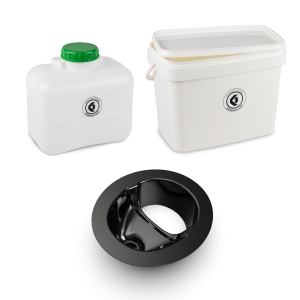-
MiniLoo composting toilet DIY kit
- separator insert with high-gloss finish
- high quality and robust finish
- load capacity toilet seat up to 150 kg
- magnetic toilet seat
- can be used as a stool
Go to item319,90 €incl. 19% VAT , plus shipping costsOld price: 379,90 €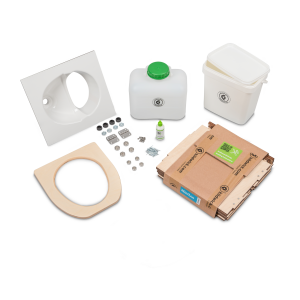 Go to item319,90 €incl. 19% VAT , plus shipping costsOld price: 379,90 €
Go to item319,90 €incl. 19% VAT , plus shipping costsOld price: 379,90 € -
Urine Separator Classic White
- original Kildwick urine diverter
- our best diverting Technology
- solid, high-quality finish
- easy to clean surface
Go to item79,00 €incl. 19% VAT , plus shipping costsOld price: 129,90 €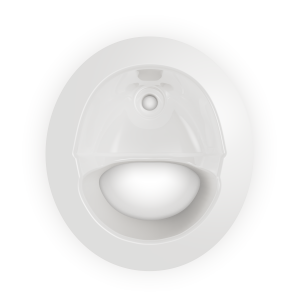 Go to item79,00 €incl. 19% VAT , plus shipping costsOld price: 129,90 €
Go to item79,00 €incl. 19% VAT , plus shipping costsOld price: 129,90 € -
Miscanthus Eco Litter 17 liter
- fast growing, organic material
- high absorbency and odor binding
- without pesticides
- 100 % compostable
- Climate neutral
Go to item14,90 €0,88 € per 1 lincl. 19% VAT , plus shipping costs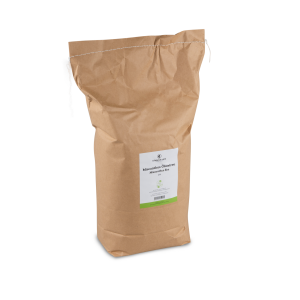 Go to item14,90 €0,88 € per 1 lincl. 19% VAT , plus shipping costs
Go to item14,90 €0,88 € per 1 lincl. 19% VAT , plus shipping costs -
FreeLoo L composting toilet DIY kit
- individual toilet construction possible
- separator with high gloss finish
- approx. 4mm material thickness
- bucket resistant to acids and alkalis
- canister food safe
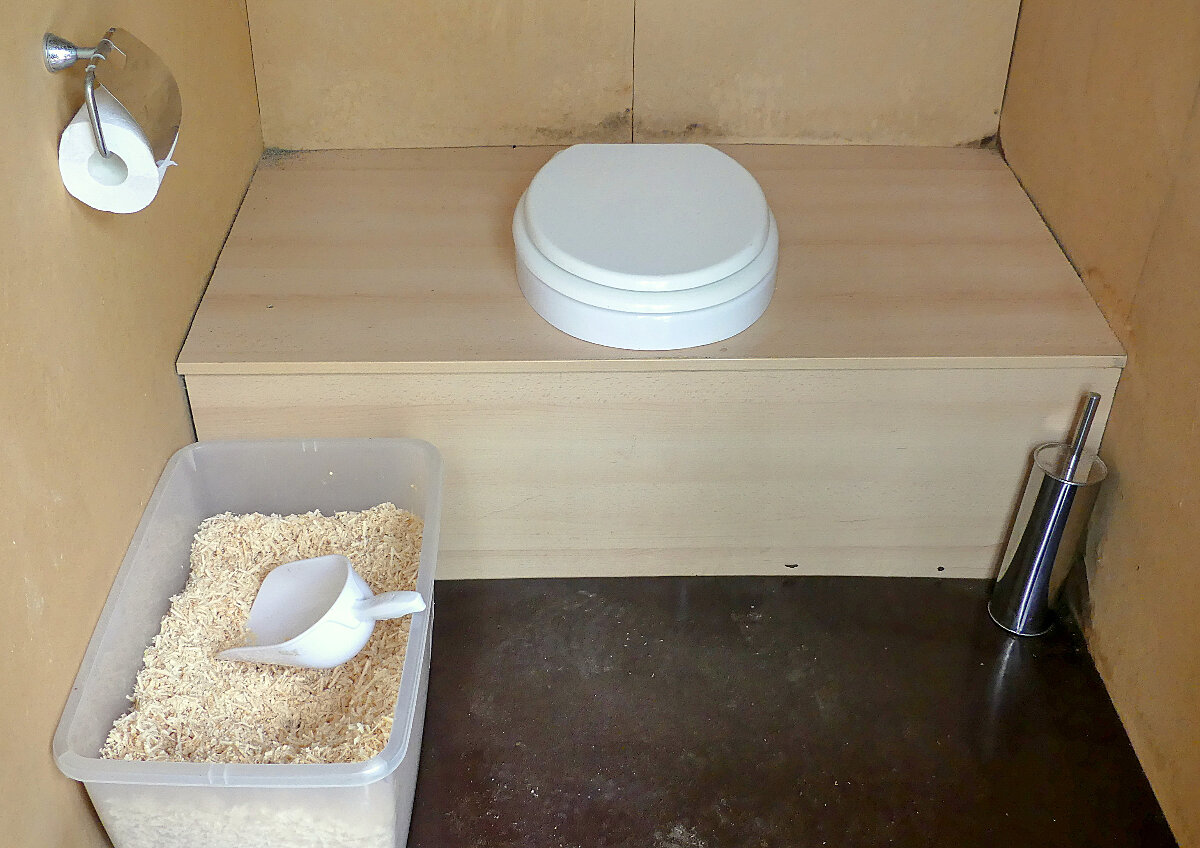
Composting Toilets: What is it & how it works
Learn more about what a composting toilet is and which benefits a composting toilet has.
Have you ever seen or heard of a composting toilet and wondered, why would anyone decide to use one over other types of toilets, and how do they even work?
Nature-lovers, gardeners, campers and even van-lifers, are starting to make the switch to composting toilets claiming them to be more comfortable, more hygienic, better for the environment, and so much more.
Maybe you’re thinking about getting a composting toilet yourself and you want to know how you could build your own or like most people, you’re in the market to buy one. Either way, keep reading and you’ll learn everything you need to know to get started with composting toilets.
What is a composting toilet?
First of all, a composting toilet is an eco-friendly toilet that goes by several names, including urine-diverting dry toilet or separation toilet. And unlike conventional toilets, it doesn't use any water and instead relies on a closed system to compost human waste.
Composting toilets are particularly useful for outdoor settings due to the fact that they are waterless and quite easy to use & maintain. And as we’ll explain in more detail below, composting toilets don’t smell and are 100% sanitary.

Where is a good place to use a composting toilet?
Composting toilets are generally very portable, making them multi-functional and easy to use in a variety of different environments, including off-grid. However, they are particularly ideal for campers, gardeners and van-lifers, here’s why…
For motorhomes & vans: They are an excellent addition to motorhomes and vans because they don't require a source of water, allowing for greater freedom in where you can park and stay.
For camping: They are an eco-friendly alternative to traditional camping toilets because they don't require the use of chemicals or the consumption of water, reducing the environmental impact of camping. Plus, late-night trips to the toilet are much easier, especially when traveling with children.
For gardens: Composting toilets are an excellent addition to a garden (on or off-grid) because they provide a sustainable and environmentally-friendly way to recycle human waste into nutrient-rich compost that can be used to fertilize plants. Plus, they save water (and money) that can be used for crops.
How does a composting toilet actually work?
Composting toilets are a simple yet effective way to turn human waste into nutrient-rich compost or humus.
The entire process can occur either in the toilet itself or in a separate container, providing a closed natural cycle that prevents waste from entering the ecosystem.
In short, microorganisms break down solid waste and bacteria into smaller particles and transform that waste into a valuable source of fertilizer. By using composting toilets, we can have a significant positive impact on the environment and its ecosystem.
Note: While composting toilets are a great option for home gardens, it's important to note that the composting process can take up to 24 months to complete. This extended time frame may not be practical for those traveling with a motorhome or van. In such cases, it may be more convenient to dispose of the waste rather than composting it.
Does it smell at all?
One of the most common concerns about using a composting toilet is the potential for unpleasant odors. However, it's important to note that if used correctly, composting toilets should not produce any sign of odors.
To ensure this, there are two crucial steps that must be followed:
- Separating urine and solids is essential to avoid any unpleasant smells. This can be achieved using a separator, which is included in all Kildwick composting toilets.
- Using a cover material (such as litter) will help absorb any moisture in the solid waste and neutralize as much of any potential odors. Simply adding a lyer of litter to the solids container after each use can go a long way in keeping your composting toilet odor-free.

What are the benefits of owing a composting toliet?
It’s true, composting toilets offer a range of benefits over conventional toilets. For starters, they save water and they’re much better for the environment.
Thanks to the closed system, they don’t require any water to function. This means that no wastewater treatment and no connection to the local sewage system is necessary — saving tons of money as well.
Plus, instead of producing waste, natural processes break down human excrement, resulting in the creation of valuable fertilizer.
Composting toilets contribute significantly to a sustainable lifestyle and environmental protection, but there are many other advantages including:
- Low purchase costs
- Low operating costs
- Independent of rising water costs
- Virtually odorless (if used properly)
- Indispensable in campers (especially if children are on board)
- Easy to store and easy to transport/portable
- Chemical-free
- Easy to clean and hygienic (see next section)
Plus so much more!
Separation for easy cleaning and disposal
Luckily, and most importantly, cleaning a composting toilet and disposing of the waste is actually quite easy, all thanks to the well thought-out separation system.
The urine separator collects liquid and solid waste in separate containers, allowing for separate disposal or reuse.
Solid waste can be disposed of at the nearest gas station while urine can be returned to nature, but is recommended to be diluted with water (1:10) beforehand.
To keep the containers clean, a quick rinse with a water hose and a biodegradable cleaner is all you need. It is recommended to repeat this cleaning procedure every time the container is emptied, although it may not always be possible if you happen to be on the road.
Pro tip: have rounded edges, making them easy to wipe clean - for better hygiene and cleanliness. Try Kildwick composting toilets
For those seeking even greater convenience, composting toilets with built-in composters are a great option. With this type of system, solid waste is collected in a composter within the toilet, and then processed into compost without ever needing to be emptied. The resulting compost can then be used in gardens, making these toilets an excellent choice for those who want to both reduce waste and improve their garden's health.
How to build a composting toilet yourself
For avid DIY enthusiasts, creating your own composting toilet can be a rewarding and surprisingly easy project. Not only does it provide a sense of accomplishment, but it can also save you money and contribute to a more sustainable toilet system.
Despite what you might think, building your own composting toilet is a straightforward process that requires minimal tools and materials. With a little bit of time and effort, you can have a functional and environmentally-friendly toilet in no time.
Here are your options:
- The easy was. Simply buy a composting toilet DIY kit, assemble the components by following the instructions and boom, you're good to go.
Click here for more information about our DIY kits.
- Build your toilet from scratch. First, choose a suitable location and gather materials such as wood, screws, nails, brackets, hinges, and other hardware. Next, construct the base and seat, install a urine separator and ventilation system (if needed), and add a container for waste and composting materials. Finally, be sure to consistently and regularly maintain the toilet to ensure safe and effective use.
Click here to explore our comprehensive guide to building your own composting toilet.
Recommendations for buying a composting toilet
For those who are not inclined towards do-it-yourself, we strongly recommend purchasing a composting toilet.
Lately, we’ve particularly been very fond of the composting toilets made by esteemed German manufacturer, Kildwick. Their range of kits provide a variety of options in terms of functionality and equipment and they offer fully assembled composting toilets.
Some notable advantages of Kildwick composting toilets include:
- No water or chemicals needed
- Can be moved or mounted
- Comfortable, hygienic and easy to clean
- Prevents bad smells (as much as possible when used correctly)
- Manufactured in Germany
- Extremely high-quality
- Elegant design
- Available as DIY kits or fully assembled
- Wide range of matching equipment
- Wooden components can be finished individually, allowing for more customizability
How to maximize the comfort of your composting toilet:
Kildwick also provides an extensive range of equipment to ensure maximum comfort. Their kits have everything you would need, including all the essential equipment required for a fully functional composting toilet.
Their eco-friendly Miscanthus litter is especially popular due to its effectiveness at eliminating odors and improving hygiene. In fact, our field tests indicate that Miscanthus litter is the most effective cover material on the market.
Their cleaning and care products help you keep your toilet clean and well-maintained.
Choose this stylish and sustainable bamboo toilet seat with lid to make your composting toilet even more comfortable.
How do you compost human waste sustainably and return it to a closed-loop cycle?
Using a composting toilet is a sustainable way to compost human waste and close the loop of nutrient cycles. A composting toilet with a built-in composter makes the process even easier.
What is the difference between a composting toilet and a separation toilet?
Composting toilets and separation toilets are two terms that are often used interchangeably, as they function in similar ways. Composting toilets are also known by other names, including compost toilets, urine-diverting dry toilets, dry toilets (although not all dry toilets have separation features), eco-toilets, and biological toilets.
How do you use a composting toilet?
Composting toilets are used similarly to traditional toilets, but without flushing. Instead, a layer of litter is added to the solids container after each use. Different types of litter, such as wood chips, sawdust or Miscanthus litter, can be used. It may take some practice to find the best position for optimal separation.
How do you clean a composting toilet?
Cleaning a composting toilet is a quick and easy process. After emptying the containers, simply rinse them with a small amount of dish soap and water using a garden hose. This applies to both the solids container and the urine separator. Remember to let the parts air dry before reassembling.
What type of toilet paper is recommended for composting toilets?
When using composting toilets, the type of toilet paper you use doesn't matter because it won't be flushed and can't cause any pipe blockages. In fact, in emergency situations, you can even use tissues or newspaper 🙃
x
Please sign in to write a comment.
